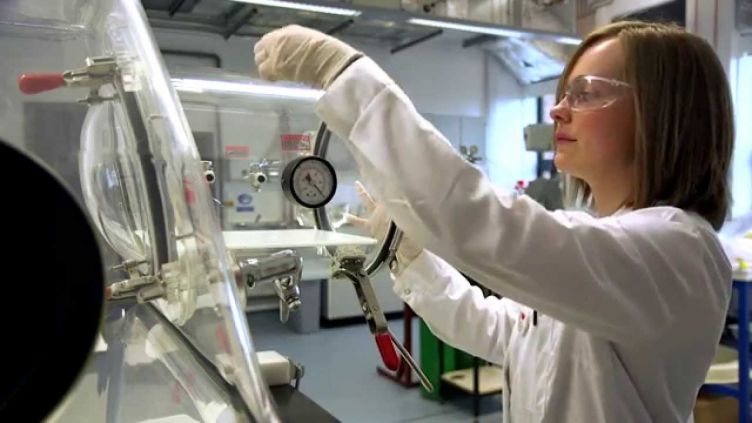I think I'm really lucky to be working at that interface to try and solve a really big problem - how we safely dispose of all the nuclear waste we have in the UK
Dr Claire Corkhill is a Vice Chancellor’s Research Fellow working in the nuclear waste materials-focused Immobilisation Science Laboratory (ISL) at the University of Sheffield. She obtained an MEarthSci in Geology and a PhD in Mineralogy and Geochemistry at the University of Manchester.
I didn’t start life as an engineer, my undergraduate degree was in Geology and from that I learnt a lot about Geochemistry and Mineralogy and then it was an easy step to Materials Science.
Material surfaces just like mineral surfaces are very interesting, complex atomistic places and what I’m really interested in is what happens when you add a drop of water to those surfaces.
So for example in cement, you start with some cement minerals which are a powder and if you add a drop of water they start to dissolve. They start to turn into new minerals or new materials and they bind together to make cement which can be used in lots of different engineering applications.
I work at the interface between materials science and engineering. My specific area of focus is looking how the surfaces of very radioactive nuclear waste materials such as cement, glass or ceramics, how they dissolve when they come into contact with groundwater.
This is really important because in the UK at the moment, we have 450,000 metres cubed of nuclear waste - about the same volume as Wembley Stadium. It’s very radioactive and we’re planning to dispose of this in a very deep nuclear disposal facility which is going to be several hundred metres below the ground where there is lots of ground water. It’s very important that we know the waste isn’t going to dissolve and it’s going to be safe.
The best thing about engineering is that I can take my insatiable desire for trying to understand how and why processes happen and apply it using creative solutions to solve engineering problems. Over the last few hundred years, most of the big changes that have occurred have been because engineers and scientists have worked together and I think I’m really lucky to be working at that interface to try and solve a really big problem - how we safely dispose of all the nuclear waste we have in the UK.
We interviewed Claire in 2015.

